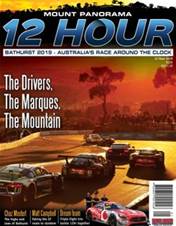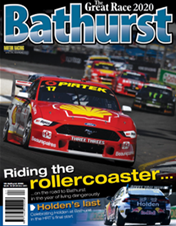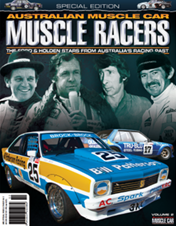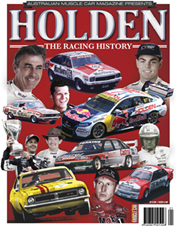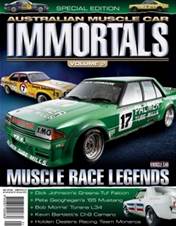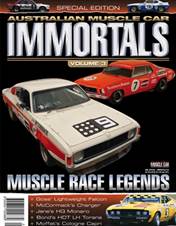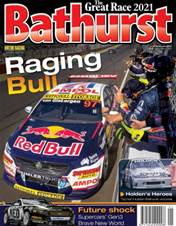The Last of the Big Bangers. It’s the now-famous catchphrase that was coined as a fond farewell to the old Group C touring car racing category at the end of 1984, as it made way for the brave new future world of the slower, less powerful Group A machines.
At the time it felt like a golden era of V8 muscle car racing had ended. Indeed, times were changing. Big V8s were going out of style: it had been more than two years since the last V8-powered Falcon rolled off the production line. Now there were no Falcons in touring car racing at all, with Ford represented only by a handful of imported ‘compact’ Mustangs with a modestly tuned 5.0-litre Windsor V8. Under international Group A regulations, the Mustangs and the 4.9-litre V8 Holden Commodores struggled to compete with the new breed of powerful four-cylinder turbos.
But if the mid-1980s seemed like a bleak time for fans of ‘big banger’ V8 racing, it wasn’t all doom and gloom. Because elsewhere in the sport, there was no shortage of very powerful, winged and wild V8-powered muscle racers.
In Group A sports cars (not to be confused with Group A touring cars) there was a small but impressive array of lightweight Le Mans-style cars powered by a variety of V8 engines including 5.0-litre Holden and 6.0-litre Chev. Meanwhile, the Sports Sedan scene, while not exactly thriving, was top heavy with some seriously fast V8s. The Australian Sports Sedan Championship had been combined with the GT championship a few years earlier, which meant a mouth-watering smorgasbord of the aforementioned V8 sedans and various Porsches, including the fire-breathing Le Mans-winning 935 Turbo.
For 1985 it was decided to combine the lot of them in one series: the Australian GT/Sports Car Championship. Morphing three categories into one series made for probably one of the most exciting, diverse, and possibly the most powerful fields ever seen in Australian racing. And if all that wasn’t enough, there were also a sprinkling of the old Group C touring cars – because they were eligible to compete as part of the GT/Sports Sedan division.
Curiously, it was a championship divided in two, because there was no overall series award, but rather separate championships for the GT and Sports Cars.
It was the GT side of things that took the fancy of Sydney businessman Paul Halstead. A pioneer of the IT industry (decades before it was even known as IT), Halstead took time out from the corporate world in the early 1980s to indulge his passion for fast and exotic cars. From the fertile mind of this enthusiast/entrepreneur would come the Holden 5.0-litre V8-powered Giocattolo supercar; but, before that, a wild de Tomaso Pantera that remains even today as Australia’s ultimate GT sports racer.
La Pantera Bianca
“I’d sold my computer company,” Halstead explains, “so I was pretty cashed up, and I wanted to make my job my hobby. I love my cars, I’ve always been passionate about them.”
The computer whiz’s initial foray into the automotive sector came in 1984 when he bought the local de Tomaso distributorship from Sydney car dealer/touring car racer Ken Mathews. Then Halstead set up the Toy Shop in North Sydney; a ‘house of dreams’ exotic car showroom concept years ahead of its time.
From there he hatched a plan to race a de Tomaso Pantera, as a way of promoting both the de Tomaso brand and the Toy Shop.

“We asked de Tomaso if they had any racecars we could use,” Halstead told us. “They said, ‘yes, we have a new Group 4 body we can send’. So it arrived, and basically it was a piece of shit. It had aluminium doors, but with steel frames so it kind of defeated the purpose – they weighed a tonne. They had strengthened the car by welding in extra box sections; they built a lot of weight into it. We looked at it, and we thought we’d be better off building our own.”
Enter Barry Lock, designer and manufacturer of the Kaditcha sports and racing car marque. That Lock’s Kaditchas were generally a match for any car (in the previous year’s Australian Sports Car Championship, Lock-built cars had finished first, second and fourth) was no surprise, because he was (and still is) a master race engineering craftsman. Earlier, Lock had spent five years at McLaren, both in Europe in F1 and America with the Can-Am programme. He was part of the design and build of the first McLaren supercar, the M6GT. He was just the man to turn Halstead’s ideas for the Pantera into reality.
Lock took a close look at the GT championship rule book to see how far he could go. In simple terms, the technical regulations were based on the Sports Sedan rulebook, but for two-seater exotic coupes. There were specific weight limits – cars with pushrod-operated valves between 5.5 and 6.0-litres had a minimum weight of 980kg – but lots of areas were free. The rules allowed for major suspension and chassis mods, leaving Lock a near-blank canvas on which to work his magic, so long as it was confined within those sleek Pantera lines – as the rules dictated.
As Halstead explains: “The rules said it had to be able to take the standard bonnet and engine cover. The roof and the sills had to remain in situ. You could run lightweight doors, and – this was the tricky bit – you could cut the firewall to put in strengthening tubes. We argued that we’re going to put in strengthening tubes, but not tubes like you’d think, because we’re going to put in a big monocoque – with full ground effects tunnels – through the firewall.
“So it runs part of the original rear and front firewalls, and the sills are in situ, even though they are 30cm inside the car, but everything was done strictly according to the rules for the GT class,” he says.
In keeping with the times – the 1980s decade of excess – this was a no-expense-spared project.
“Each time we cut away a section of the bodywork and threw it in the bin,” Barry Lock told Motor Racing Australia magazine in 2001, “‘we all laughed and said ‘that’s another $5000 worth!’”
By the time they’d finished, all that was left of the original de Tomaso sheetmetal was the roof, some of the firewall sections, the door surrounds, and the sills. In total, it added up to only about 50kg of the original car!

You have reached an article available exclusively to Premium members.
JOIN FROM AS LITTLE AS $6.66 A MONTH* FOR INSTANT ACCESS.
Already a member? Log in
* Billed annually at $79.90




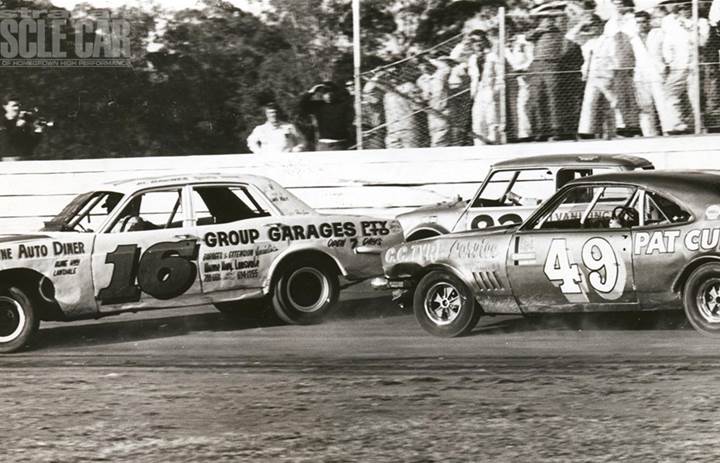
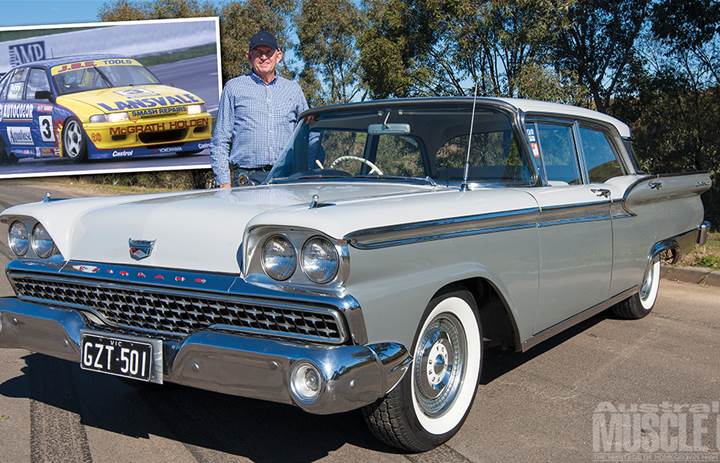
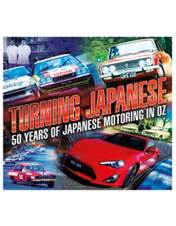

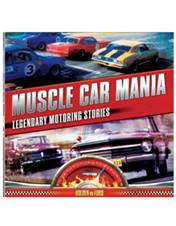

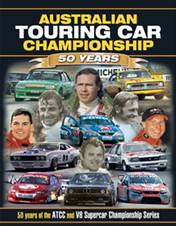
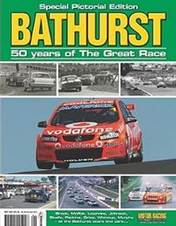
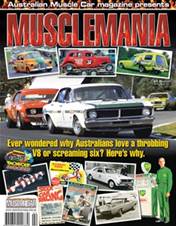
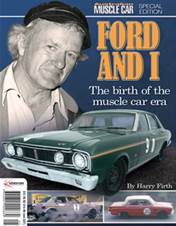
.jpg&q=70&h=226&w=176&c=1&s=1)
